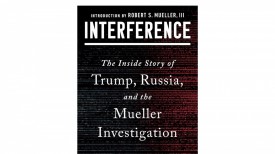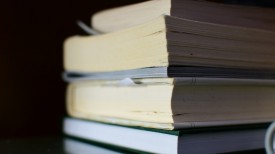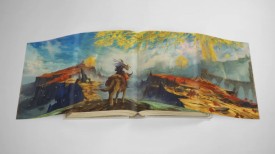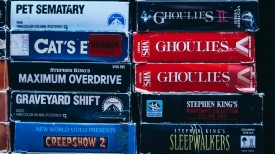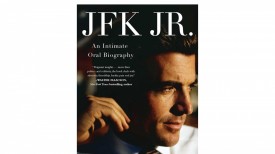Uri Geller Returns Library Book About Investigations on His Psychic Abilities 47 Years Later

The renowned spoon-bending performer Uri Geller discovered "The Geller Papers" in his Israeli storage unit nearly five decades after borrowing it. Geller sent it to his daughter in LA to return to the library. (Photo : Amazon/Charles Panati)
Uri Geller, the renowned spoon-bending performer and self-proclaimed psychic, stumbled upon a surprising discovery while rummaging through cardboard boxes in his Israeli storage unit.
Nearly five decades after borrowing it, Geller found a book titled "The Geller Papers" that he had checked out of the Los Angeles Public Library in January 1977.
Rediscovering a Forgotten Book
Geller's travels took him from California to New York, Connecticut, London, Massachusetts, and eventually back to Israel, with the book unwittingly accompanying him throughout his journey. He had initially borrowed it to show it to his friend, New Age writer Carlos Castaneda, and subsequently forgot about it as he moved around. However, while searching for lids to Ming Dynasty vases in his storage, Geller stumbled upon the long-lost book and was elated by the find.
Feeling a sense of nostalgia and a desire to return the book, Geller shipped it to his daughter, Natalie Geller Kaldes, who lives near LA. Despite concerns about overdue fines, the LA public library no longer charges late fees, relieving Kaldes of any financial burden. Monica Valencia, a public relations representative for the library, expressed delight at having the book returned despite being withdrawn from the branch where it was initially borrowed. As a result, Kaldes was allowed to keep her copy, adding a special significance to the rediscovered book and its journey through time and space.
Uri Geller's Psychic Journey
The book, which chronicles scientific investigations and experiments conducted on Geller, was a testament to his journey from Israel to the US, where he participated in CIA-conducted experiments exploring his psychic abilities.
With his claimed psychic skills, Geller wowed viewers on the BBC's "The Dimbleby Talk-In" in 1973, performing mental feats like bending forks. This performance shot him to international stardom.
Geller toured the world, drawing crowds with demonstrations of his supposed psychic powers, primarily focusing on bending spoons. Since he maintained that his acts were not trickery but evidence of true psychic talents, his actions were viewed as a challenge to established science.
The CIA documents that were made public provided insight into Geller's participation in the "Stargate" program, which investigated the use of remote viewing for espionage. During trials at Stanford Research Institute in California in 1973, Geller's extraordinary talents persuaded the CIA of his paranormal perceptive capacity.
In these experiments, Geller successfully replicated images drawn by CIA agents located in another room, demonstrating his purported psychic capabilities. Despite some unsuccessful attempts, Geller's accuracy in reproducing target images, including complex details like the number of grapes in a bunch or the shape of a flying bird, impressed researchers. However, his performance seemed to decline in the presence of skeptical observers.
The researchers could not determine whether Geller's perception of images stored in a computer's memory originated from the computer itself or the collective mental awareness of individuals in the room who were aware of the target image. Despite passing several tests, Geller admitted to experiencing difficulty in obtaining clear impressions during some instances.
RELATED ARTICLE: Father Tuck's 'Book of Animal Life' Returns to Brookfields Primary School After 120 Years
© 2023 Books & Review All rights reserved.
Popular Now
1
Books to Read After 'Fourth Wing': Top Picks for Fantasy and Romantasy Fans

2
‘The Secret Public’ by Jon Savage Book Review: An Insightful Look Into the LGBTQ Influence

3
Stephanie Regalado's 'If They Only Knew' Column Is Now A Book, Unleashing 60 Anonymous True Stories to Empower Women

4
'No Wire Hangers' Scene That Almost Did Not Happen: New Book Reveals Faye Dunaway's Struggles

5
Rare First Edition of Aphra Behn's Novel 'Oroonoko' Discovered in Kent: A Historic Literary Find

Latest Stories
Book Reviews
‘The Secret Public’ by Jon Savage Book Review: An Insightful Look Into the LGBTQ Influence

Book News
Stephanie Regalado's 'If They Only Knew' Column Is Now A Book, Unleashing 60 Anonymous True Stories to Empower Women

Book News
'No Wire Hangers' Scene That Almost Did Not Happen: New Book Reveals Faye Dunaway's Struggles

Book Reviews
‘The Perfect Couple’ by Elin Hilderbrand Book Review: A Captivating Summer Mystery

Book News
New Book ‘The Franchise’ Reveals Penguins President Kyle Dubas’ ‘Biggest Mistake’ as Maple Leafs GM

